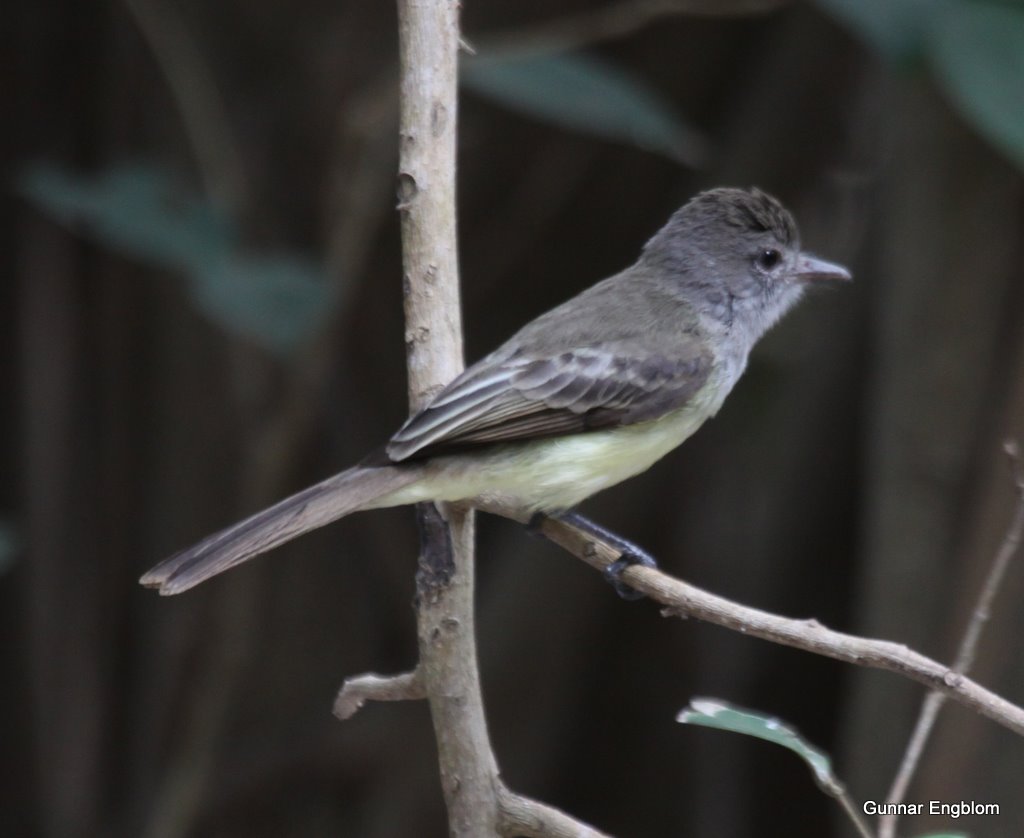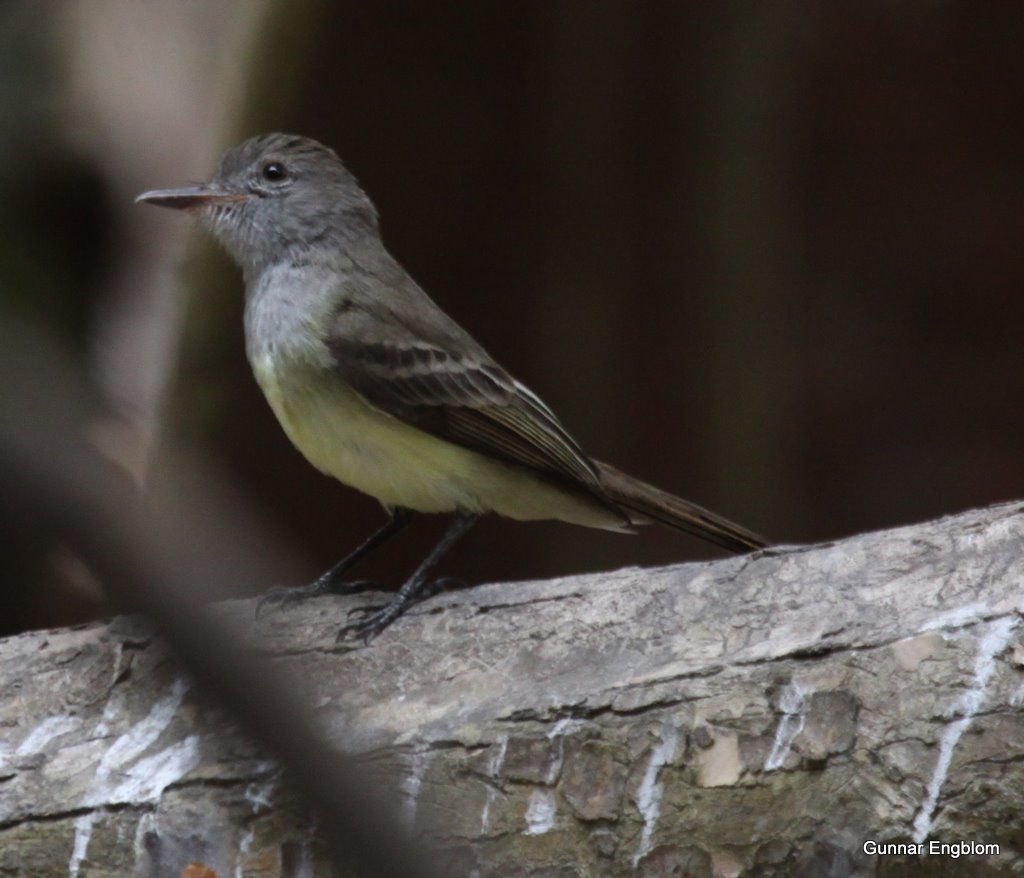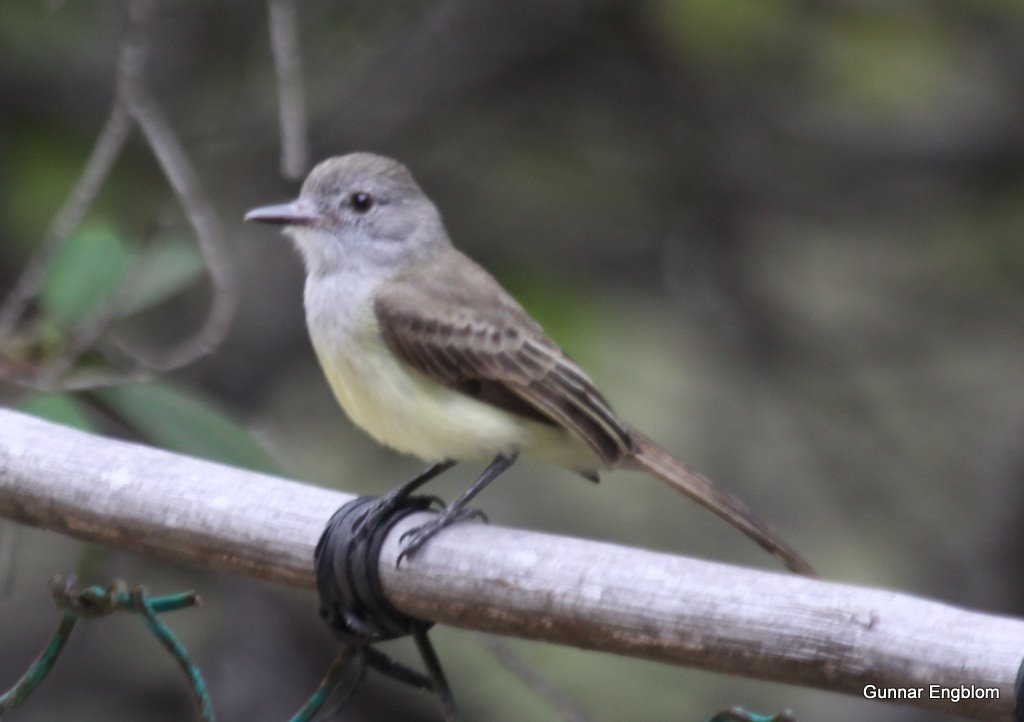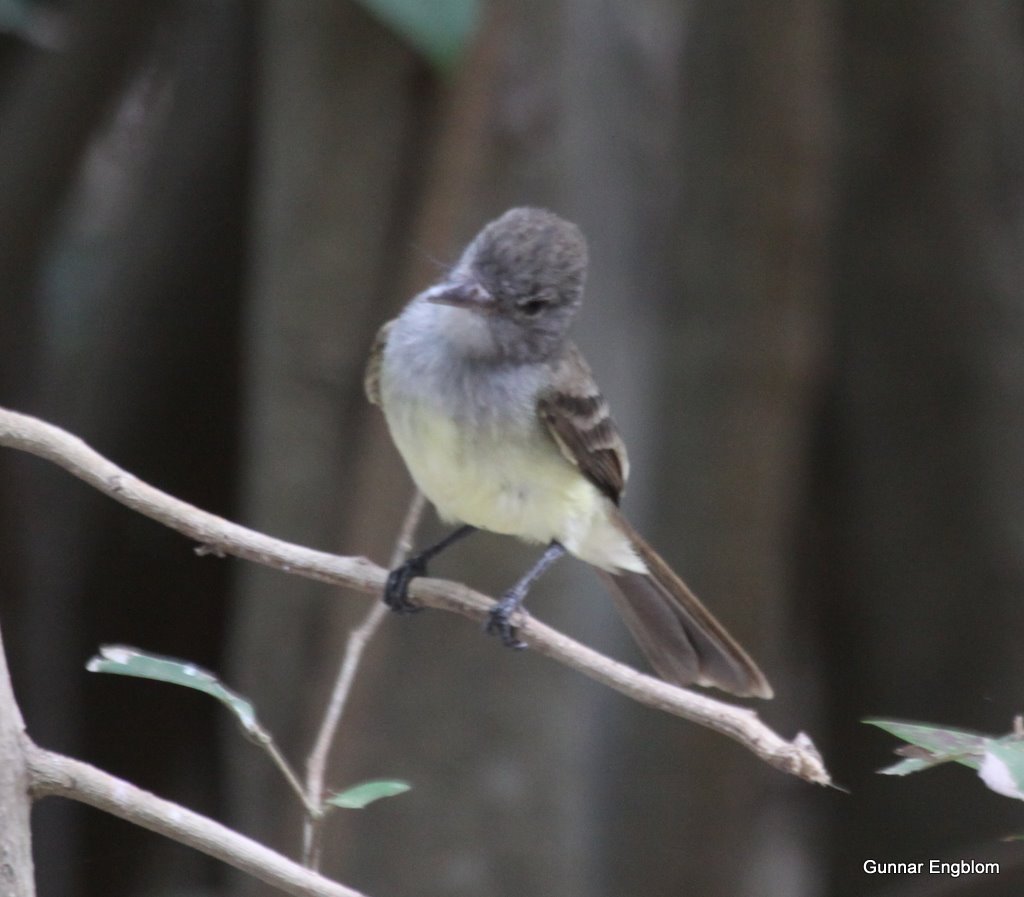Oh my! Myiarchus identification problems
Identification Quiz. What Myiarchus Flycatcher is this?
 There are 22 species of Myiarchus Tyrant-Flycatchers. In many places they present no problems in identifying as only or two species occur. However, in some areas various species overlap – and one also have to account for migrating species.
There are 22 species of Myiarchus Tyrant-Flycatchers. In many places they present no problems in identifying as only or two species occur. However, in some areas various species overlap – and one also have to account for migrating species.
The thing to look for to help ID are general size, bill size, presence of rufous and the amount of rufous in the tail. Sometimes it is devilishly difficult to ID on looks alone. Fortunately, many of them are quite vocal. It pays off to learn the calls of the most common species by heart.
This particular one is still a mystery to me. I have seen it for two days in a row here in Paradise. I am on family holiday on Isla Palma – a Caribbean beautiful island with crystal clear water and white sand beach near Cartagena Colombia. It is not a birding holiday – and yet this bird is potentially a lifer for me.
Tomorrow, I plan to do a series of play-back experiments to see if I can ID it to 100%.
It is quite clear that the bird in question is either a Panama Flycatcher Myiarchus panamensis or a Venezuelan Flycatcher Myiarchus venezuelensis. They are practically identical.
Birds of Colombia doesn’t help much. The text of Panama Flycatcher says: “Essentially indistinguishable from Venezuelan and Short-crested Flycatcher. ” Short-crested, which I know very well, is out of range – and jizz-wise this bird feels very different from Short-crested. There is absolutely nothing crested about this bird.
The ranges of Panama and Venezuelan overlaps here in Sucre department – so right now I am stuck. Panama Flycatcher would be a lifer for me.
So what do you think? Panama or Venezuelan Flycatcher – or should it just remain as Colombian Mystery Flycatcher.
Click on the images for larger size.




Would the habitat be a good clue? In Costa Rica at least Panama Flycatcher is restricted to Mangroves.
I really want it to be Panama – and the main vegetation on the very small island (approx 2km across) is indeed mangrove. Problem is that the flycatcher was found in the scrub area on the drier bits of the island – away from the prominent mangrove.
Hi Gunnar,
the call is THE clue and the most easy way to ID these 2 species. In Birds of Colombia, from ProAves (McMullan and others, 2010), they say :
Panama Flycatcher : fast, doubled whistled note
Venezuela Flycatcher : sharp, not-whistled “wherp”, repeated
I just saw Ven Fly around Minca on January and it’s sooo easy…..if they call !
I was also birding with Miles Mc Mullan at Minca and even with very good pictures, he doesn’t ID them…
Hope this helps
Cyril Schönbächler, in Colombia since November
Thanks for the input Cyril. I am a bit disappointed I must say that not even good birders with field experience can tell them apart without the calls. The particular bird I photographed did not call at all – not even with playback of one of the species. Unfortunately negative response does not show anything. Maybe the bird is a non-territorial juvenile. The thin rufous outer edge of the tail could indicate this and the plumage looks quite fresh. Juveniles of both species have rufous edgings of the tail-feathers – but Venezuelan retains the rufous also as adults.
I have ID:ed it now as I found more individuals that called. I am preparing a follow-up story with some more field data and the final ID.
Sent from my iPad
Hi Gunnar – What did you decide about this bird?
It was a Panama Flycatcher, and a lifer! Good family, holiday!